|
|
A
Close-up View of the "Unsightly Weed" (Rumex crispus) |
|
|
A
Close-up View of the "Unsightly Weed" (Rumex crispus) |
I
doubt very much that the average observer cares much about curly
dock. It has little if any of the charisma of its wildflower
neighbours. In fact, the plant may only be noticed in late summer
or early fall when the sturdy upright stems and seeds take on an
unappealing dark brown, rusty colour. During the earlier stages
of its development, the green flowers are so small, that they are
almost impossible to see with the naked eye. It is only when
studied up close, with magnifier or camera, that curly dock
distinguishes itself as a plant with quite beautiful, and colourful
structures.
Curly dock is a member of the buckwheat family, and grows from 60 to
120 centimetres in height. The genus name Rumex is derived from the old Latin
name for dock or sorrel plants. The species name crispus also is derived from Latin,
and means curly or wavy in appearance.
It is the leaves of curly dock that give the plant its common
name. The image below shows just how curly they really are!
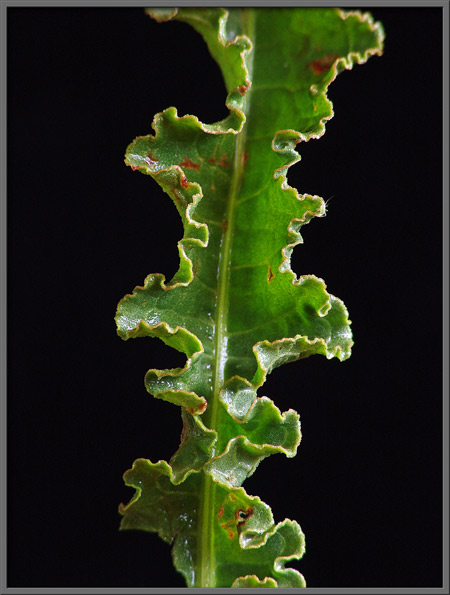
Most of the leaves of the plant are beneath the flowering head shown
below. At this early (bud) stage there are only hints of the red
colour in the stem that will predominate later. It is also
possible to see the coloured grooves in the stem.
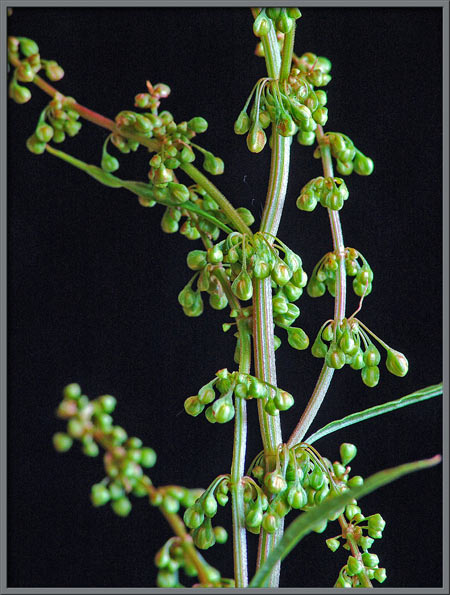
The buds occur in crowded whorls, one of which can be seen in the image
that follows.
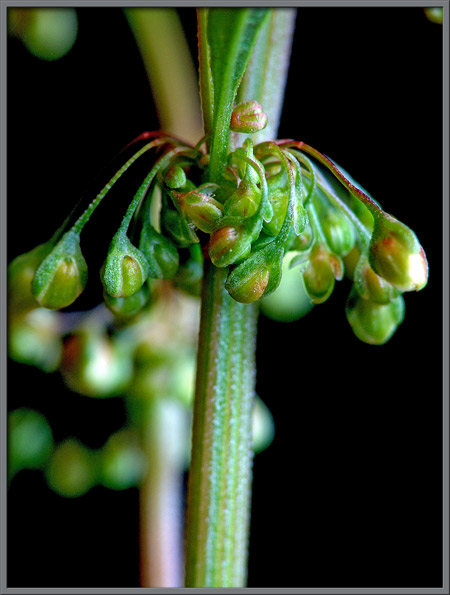
A closer look reveals one of the developing buds. Three outer
green sepals, (modified
leaves), can be seen clasping an almost spherical white inner
core. This core is actually composed of the three inner, larger,
sepals which will turn green as the bud opens.
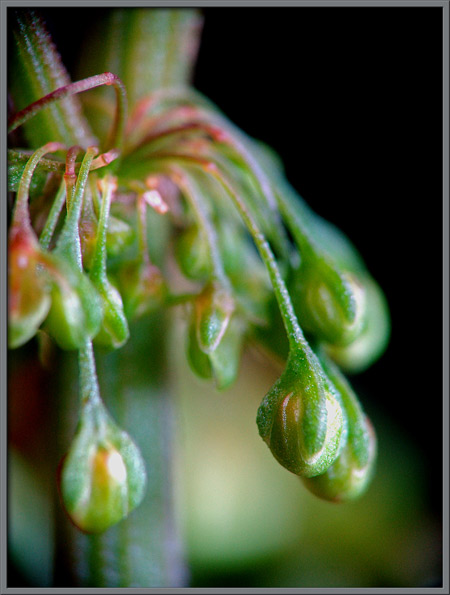
The two images that follow show a curly dock flower in all its
glory. It has no petals, and is about 3 mm in diameter. The
green petal-like structures are the six sepals that enclose the
reproductive parts of the flower. The anthers (male, pollen producing
organs), stand out because of their bright yellow-orange colour.
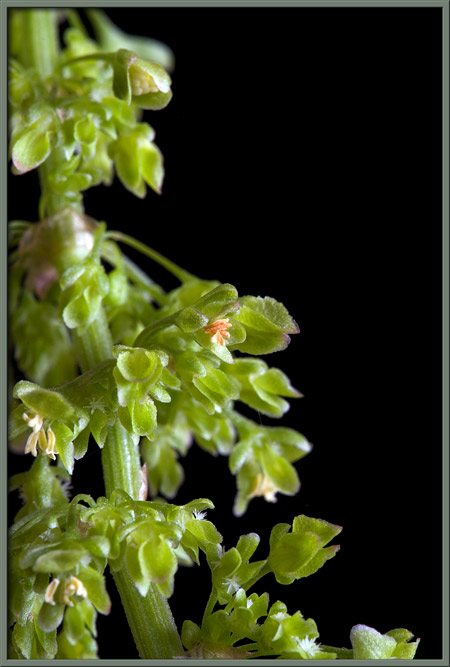
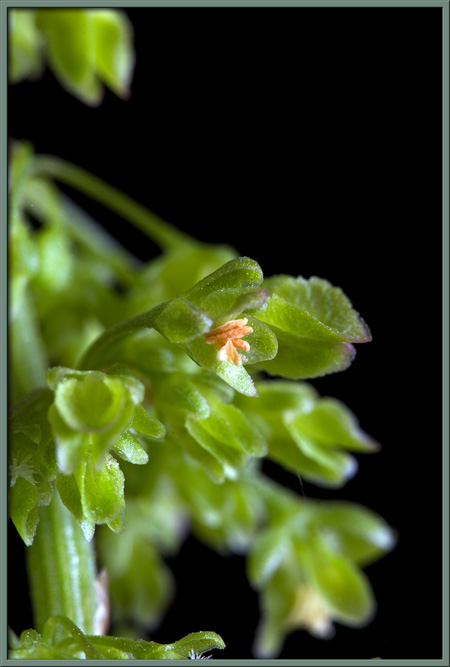
Although the anthers are easy to see in the image below, the
octopus-shaped, pale yellow stigma
(female, pollen accepting organ), is harder to make out. One is
visible in another flower to the right of the main one. The arrow
in the second image points to it.
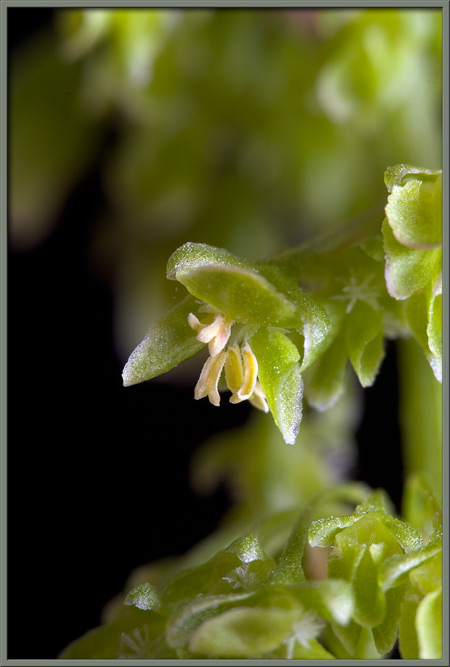
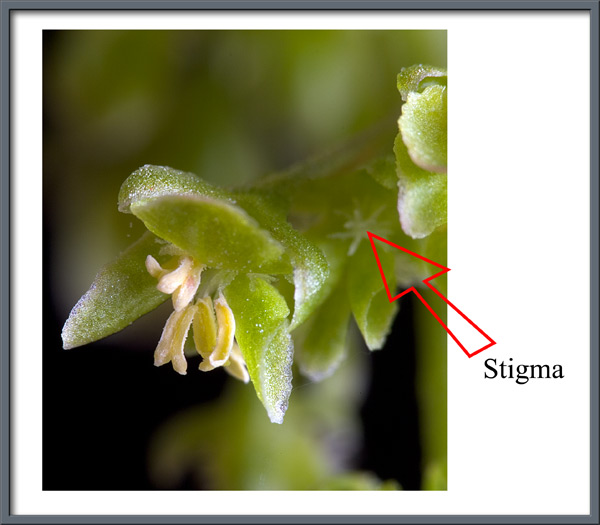
A head-on view of one flower shows the six banana shaped anthers.
The outward curving sepal pointed to in the second image is one of the
inner (larger) sepals mentioned earlier. It is flanked by two
smaller inward curving sepals. This upper sepal and two more at
120 degrees, form the points of an equilateral triangle. The
other small sepal is hidden behind the bottom-most anther.
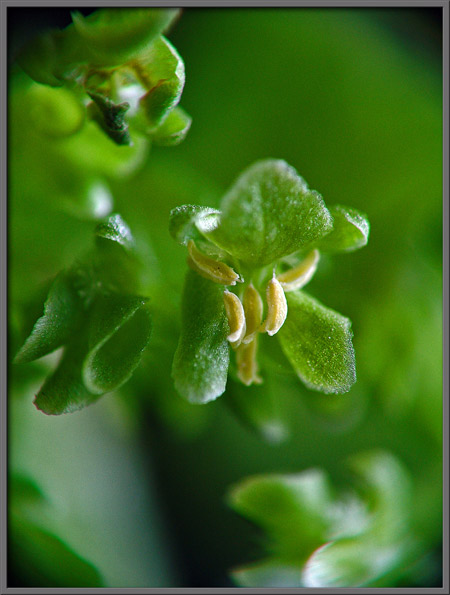
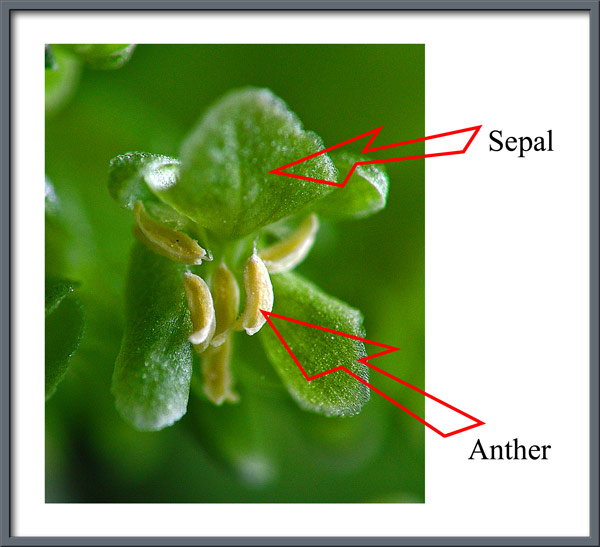
After fertilization has occurred, the plant soon becomes covered with
developing fruit. Each fruit is a three-sided winged achene (a small seed-like fruit that
does not open and contains one seed). In the three images that
follow, the fruit is almost white in colour, and the wings are pale
green and veined.
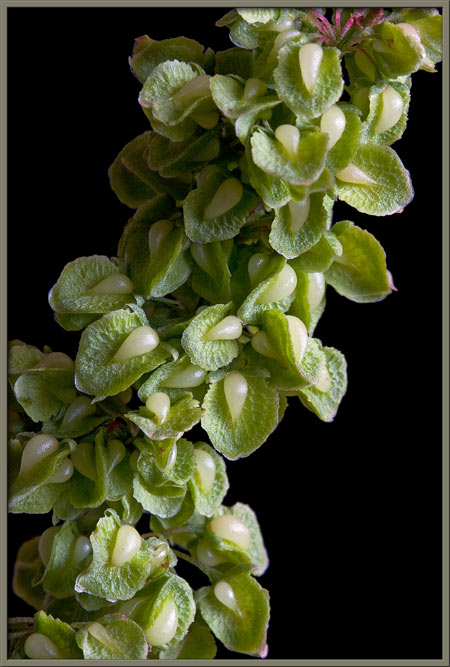
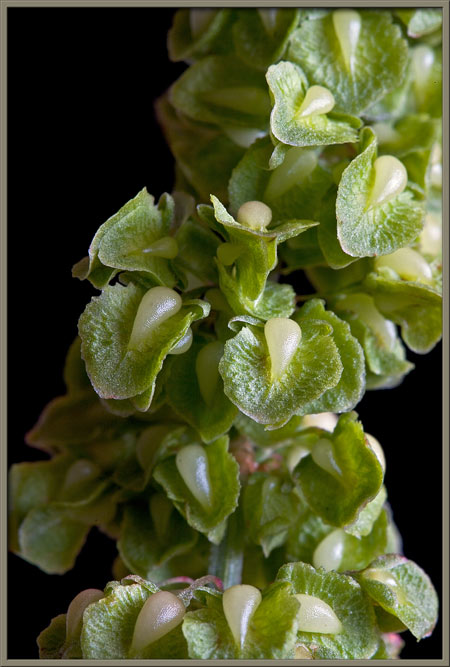
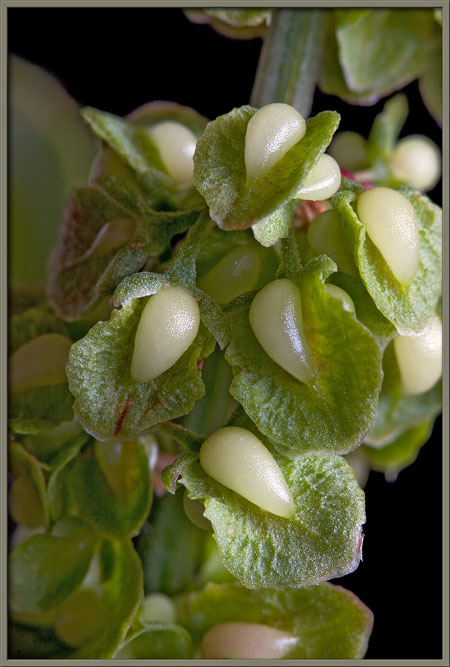
The colour transformations in the achenes as they develop are quite
striking. Fruit a little older than the ones shown above can be
seen to have a slight pinkish colouration.
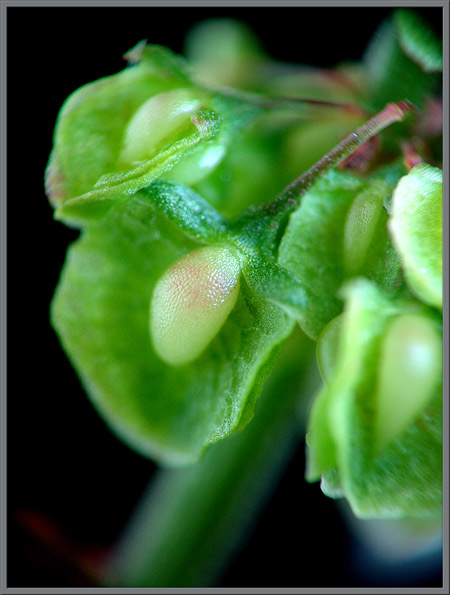
At this stage the stem has become dark red in colour, everywhere except
beneath the whorls of fruit!
Several upper leaves can be seen in the left photograph.
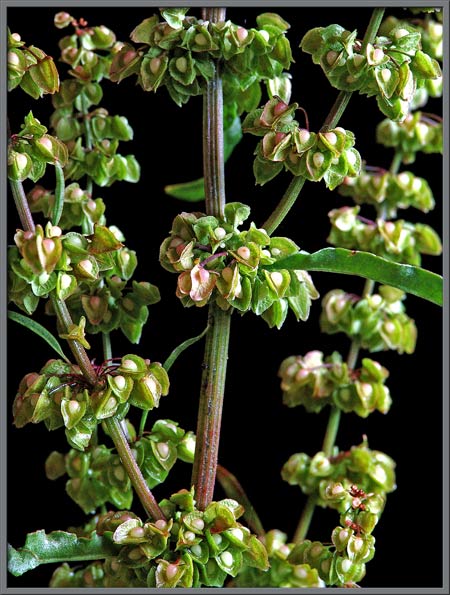
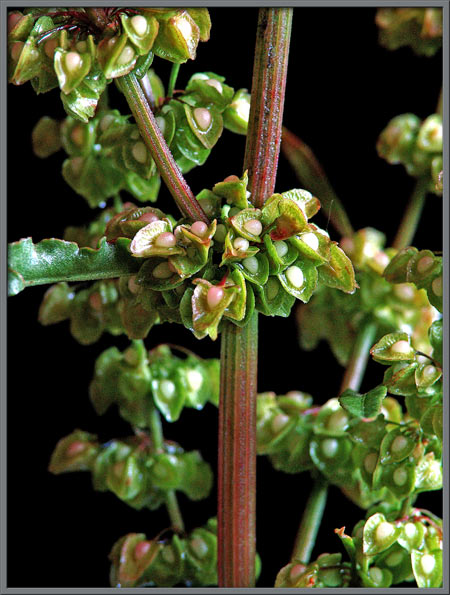
The stem above a whorl of achenes has been removed to show how the
fruit are attached to the main stem. Notice that there is a tiny
joint in each achene stem, two thirds of the way to the main
stem. It is interesting that the scientific family name of the
plant is Polygonaceae, which
is derived from the Greek words 'poly' which means many, and 'gonum'
which means knee. Certainly the whorl of achenes displays many of
these “knees”.
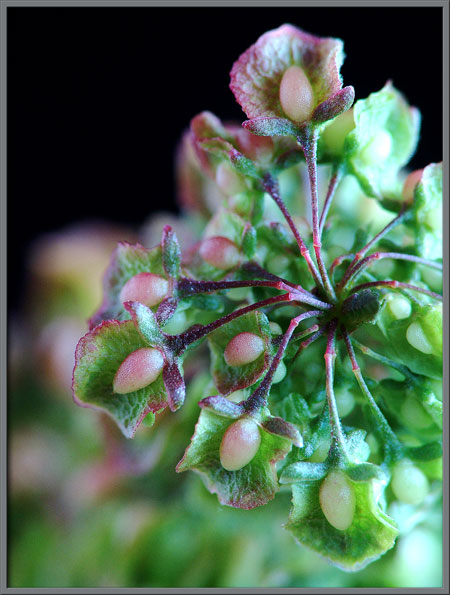
Later still, the fruit of the achene has become red in colour, as has
the edge of the “wing”.
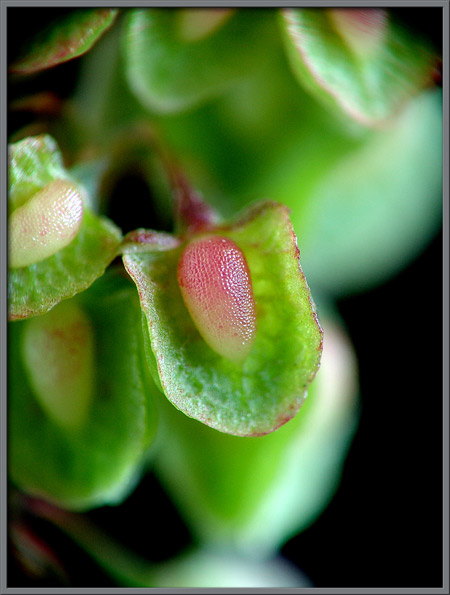
As time passes, the red colouration of the wings increases.
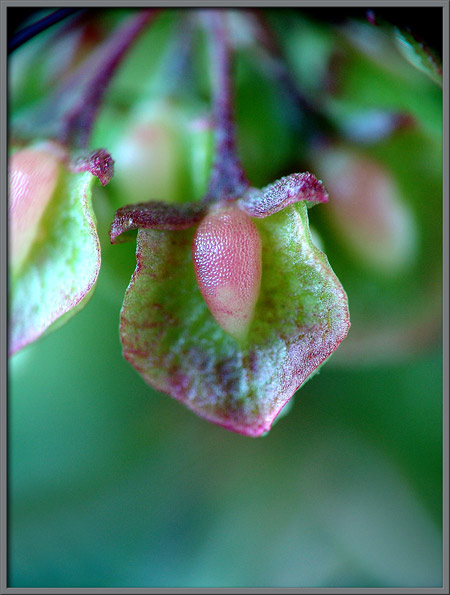
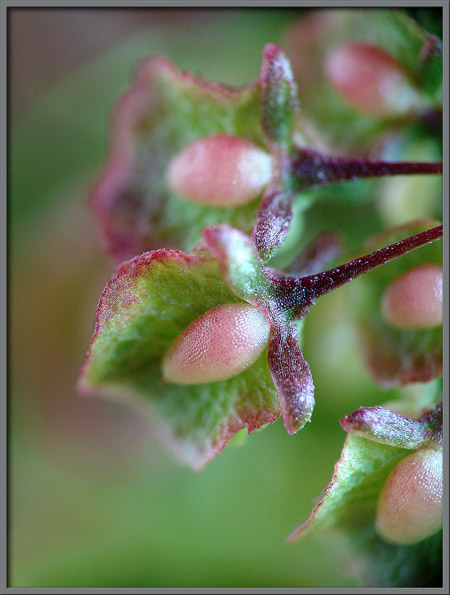
Depending upon how much rainfall has fallen during the summer, plants
may develop differently. The image below shows the brown, (rather
than greenish-red) colouration that occurs if there has been
insufficient rainfall.
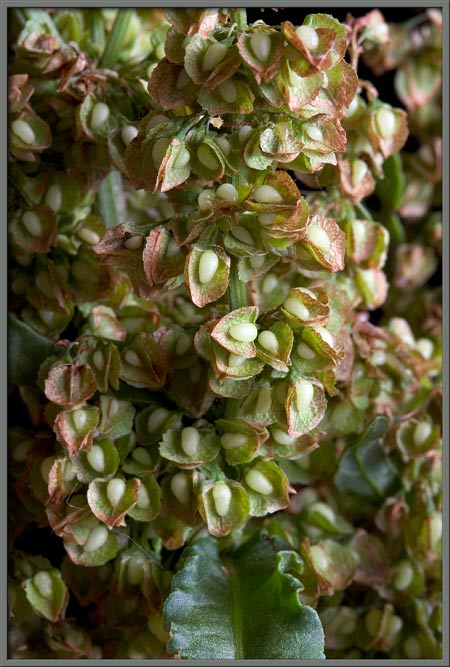
It is at the final stage of development that the plant looks its most
“unsightly”. Strangely, it is now that the achenes are their most
striking when observed macroscopically.
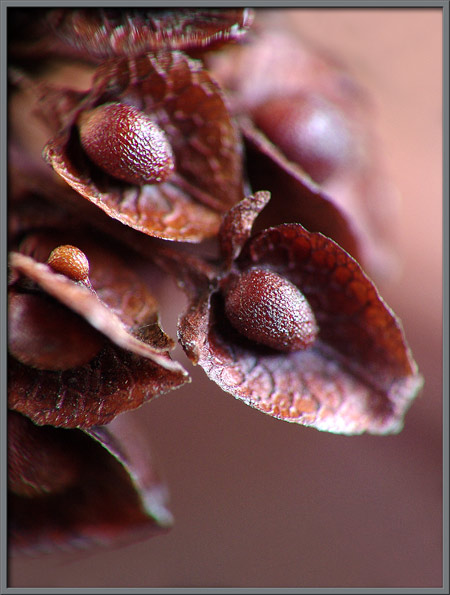
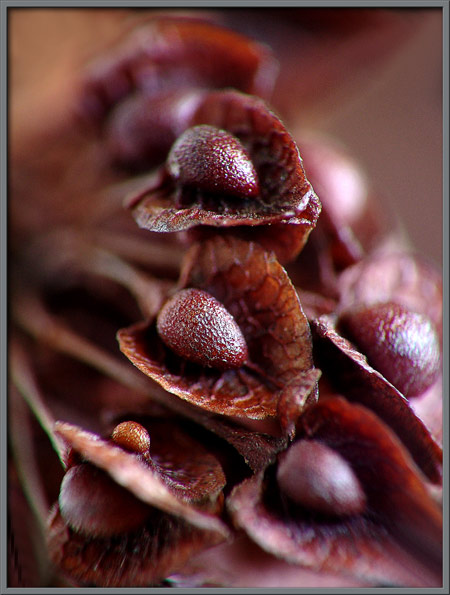
Occasionally, malformed achenes are visible. They too are
striking in their unusual structure.
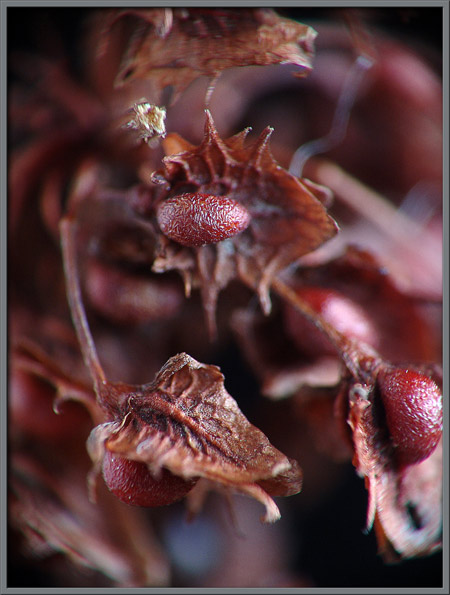
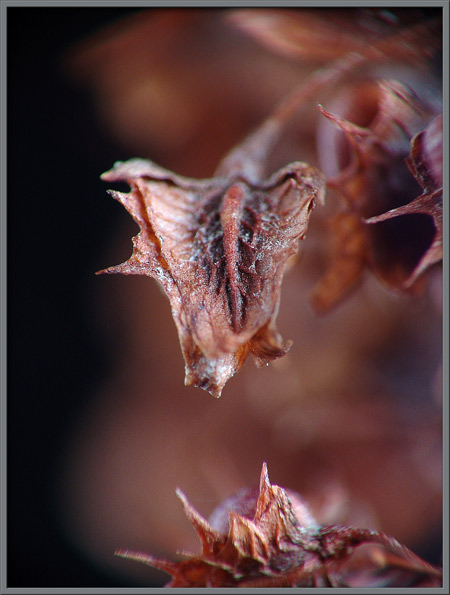
One afternoon, while photographing some achenes, I noticed movement in
the Canon 20D’s viewfinder.
An insect visitor was using an achene as a perch! For five
minutes he or she? tried to prevent me from taking his or her? picture
by playing “hide and seek”. As you can see below, I won the
game. It was actually quite difficult, since the insect would
stop moving for only a couple of seconds before moving on. (On a
technical note, one advantage of a high megapixel digital camera can
clearly be seen in the images that follow. The second more highly
magnified picture in each pair is a crop from the smaller image.
Try doing that with a three megapixel camera!)
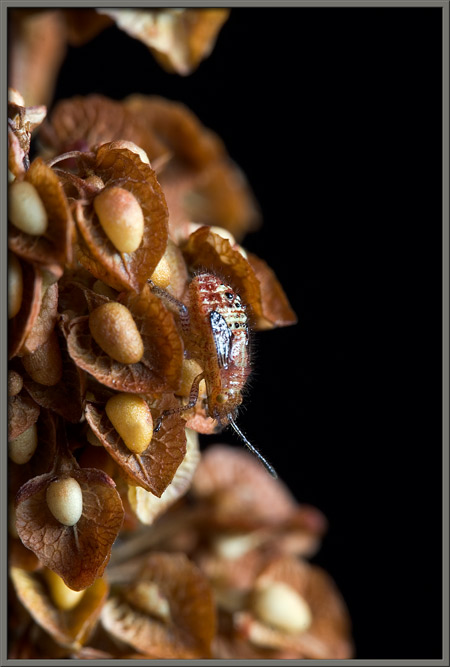
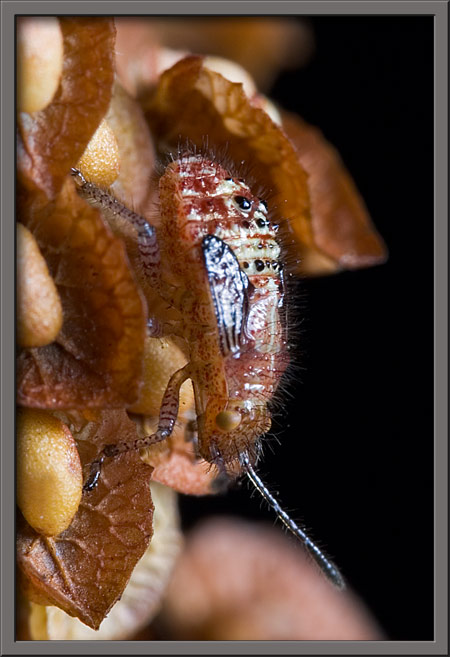
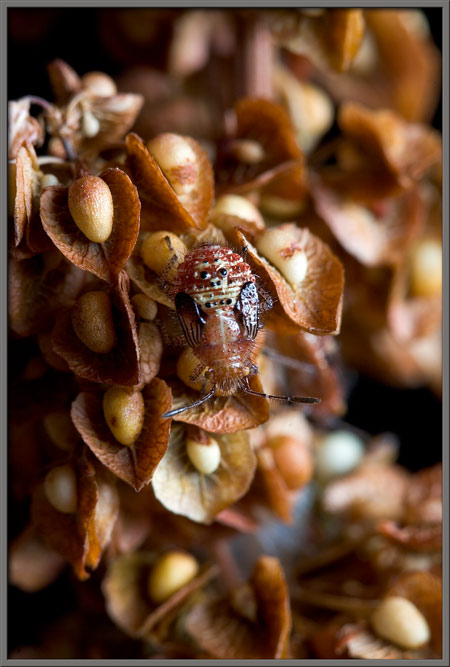
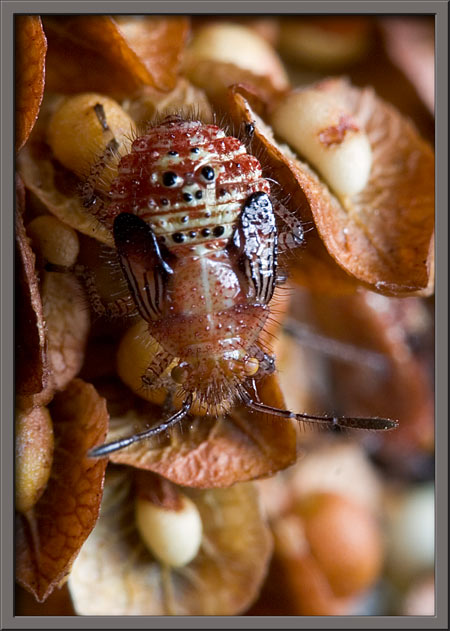
It’s commonly said that “there’s no accounting for taste”. I must
admit that curly dock is a great favourite of mine. I find the
dichotomy of its “ugly” appearance when viewed from afar, and striking
beauty when viewed close-up, to be fascinating!
Photographic Equipment
An eight megapixel Sony CyberShot DSC-F 828 equipped with achromatic
close-up lenses, (Nikon 6T, Sony VCL-M3358, and shorter focal length
achromat used singly or in combination), was used to take most of the
images. The lenses screw into the 58 mm filter threads of the camera
lens. Still higher magnifications were obtained by using a macro
coupler (which has two male threads) to attach a reversed 50 mm focal
length f 1.4 Olympus SLR lens to the F 828. A few of the photographs in
the article were taken with an eight megapixel Canon 20D DSLR and Canon
EF 100 mm f 2.8 Macro lens. (The photographs in the article were
taken over a two year period.)
References
The following references have been
found to be valuable in the identification of wildflowers, and they are
also a good source of information about them.
Published in the June
2007 edition of Micscape.
Please report any Web problems or
offer general comments to the Micscape
Editor.
Micscape is the on-line monthly magazine
of the Microscopy UK web
site at Microscopy-UK
© Onview.net Ltd, Microscopy-UK, and all contributors 1995 onwards. All rights reserved. Main site is at www.microscopy-uk.org.uk with full mirror at www.microscopy-uk.net .